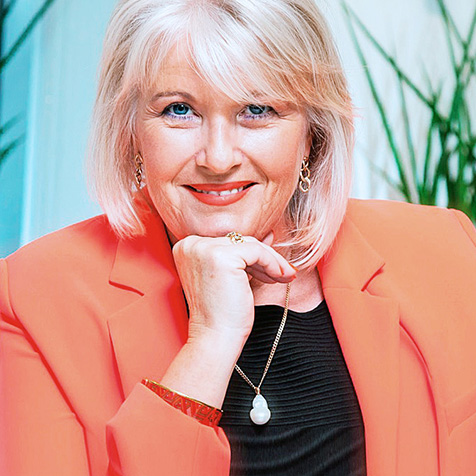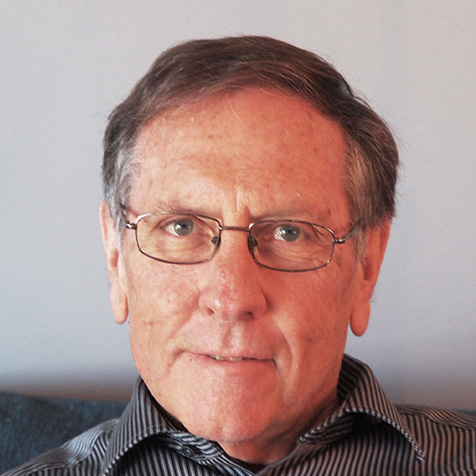Loading component...
At a glance
Today, about half CPA Australia’s members are women, but the profession deliberately excluded them in its early years.
Arguments against women working as accountants included that they were taking the jobs of husbands, fathers and brothers and should stay at home, and that females were not mentally up to the work.
The debate raged in organisations such as the Incorporated Institute of Accountants, Victoria where, in 1894 Thomas Brentnall, a trailblazer in establishing accounting as a profession in Australia, warned of “the invasion by the advanced woman”.
The “advanced woman” referred to the educated middle-class, whom it was presumed did not need a wage.
Brentnall had changed his mind by 1899 when the Queensland and Victorian institutes held a joint vote on whether to admit women and he voted for change. The vote was lost by 69 against, 26 in favour, and there was legal opinion that the constitutions of most of the Australian accounting bodies did not allow for women.
No female accountants
Australia had several rival accounting bodies in the early 1900s, which had fought for accountancy to be recognised as a profession, giving them the right to exclude unqualified people. They were sensitive to any move they thought could compromise their reputation, such as admitting women, who would be considered less qualified and less experienced practitioners.
There was also a fear that the profession could become overcrowded, pushing down wages.
Tenacious women continued to apply to the various organisations and also had male advocates writing to the accounting bodies supporting the admission of sisters and daughters.
May 2018 marks 40 years since American management consultant Marilyn Loden coined the phrase “glass ceiling” to describe the intangible barrier that prevents so many women from rising to top of their profession.
Despite many steps to get more women in senior executive and board positions over the past four decades, progress remains slow and the glass ceiling remains stubbornly intact. It begs the question: are these initiatives ineffective, or are they just not working fast enough?
The good news is that cracks in the glass ceiling are finally emerging and the business case for diversity in leadership has been well documented.
The 2018 Delivering Through Diversity report from McKinsey & Company notes that companies in the top quartile on executive-level gender diversity worldwide have a 21 per cent likelihood of outperforming their fourth-quartile industry peers on earnings before interest and tax. McKinsey has also found that US$12 trillion could be added to global GDP by 2025 by advancing gender equality.
Findings from the 2017 Gender Equality Scorecard from Australia’s Workplace Gender Equality Agency (WGEA) show the representation of women across all management categories has grown consistently since 2013-14. More than 43 per cent of management appointments in 2016-17 went to women.
In 2016, when recruitment firm Hays examined employment trends in more than 3000 organisations across Malaysia, Singapore, Hong Kong, China and Japan, it found 51 per cent of organisations reported having formal diversity policies and procedures in place.
Speaking at a World Economic Forum event in Davos this year, Jack Ma, co-founder of Alibaba Group, said women are the secret of the business’s success.
“If you want your company to be successful, if you want your company to operate with wisdom, with care, then women are the best ... part of the ‘secret sauce’ of our success is because we have so many women colleagues.”
What’s less encouraging is the glacial pace of change. In Australia, the latest WGEA data shows women account for only 38.4 per cent of managers and 16.5 per cent of CEOs.
While the full-time gender pay gap is trending down, it continues to favour men in every industry and occupation, with men taking home A$26,527 a year more than women, on average. Female representation on boards has remained static over the past 12 months at 24.9 per cent.
Even at Alibaba, despite the enthusiasm of their boss, women make up only 37 per cent of senior managers at Ma’s company.
Less talk, more action
Gender equity means giving people access to what they need to be successful. A criticism of gender equity initiatives to date is that they are big on talk and slow on action.
It simply hasn’t served men to tear down the workplace structures that have favoured their careers over those of women for so long. Discrimination remains one of the biggest barriers to women moving into leadership roles.

The latest WGEA data shows that while more than 70 per cent of employers have a strategy and/or policy to support gender equality, fewer than 30 per cent have it embedded in management KPIs.
Almost seven out of 10 employers have a flexible working policy or strategy in place, yet fewer than 5 per cent are setting targets for the engagement of flexible work.
“Flexibility is key to a greater gender balance across workplaces,” says Libby Lyons, director of WGEA.
“Fewer than 2 per cent [of organisations] are setting targets for men working flexibly, and we know that men working flexibly is important in all of this. We also have to accept that management roles can be done part-time. Our data shows that only 6 per cent of managerial roles are worked part-time and we know that women work part-time at three times the rate of men.”
Lyons notes that while more employers are analysing the gender pay gap, too often the information does not reach board level.
“Just under 14 per cent of those measuring the gap are actually reporting those metrics up to the board,” she says.
“If a board is there to set and monitor strategy, then surely to goodness they need to know what’s going on in the workplace, particularly when it comes to the way they’re paying their people.”
Champions of change: how men can be part of the solution
Lyons says the chronic underrepresentation of women in management is a key driver of the gender pay gap.
“We cannot look at this as a women’s issue,” she says. “We need men to be part of the solution.”
The Male Champions of Change (MCC) Institute was established in 2010 with precisely this aim. It began with eight male champions and today there are about 130.
Members are required to share their experiences and strategies for advancing gender equality across corporate, government and community sectors, and to be spokespeople for the promotion of gender equality. Success is measured through annual progress reports and regular business forums.
A 2016 progress report, for example, found that 80 per cent of MCC organisations have gender targets attached to senior executive KPIs. All MCC organisations had also completed a gender pay gap analysis and had taken action to close it.
Elizabeth Broderick, Australia’s former sex discrimination commissioner, was instrumental in MCC’s formation and says its objective is to redesign workplace systems.
“That’s why men are such a very important part of it,” she says.
“Men have been latecomers to gender equality and so this is about listening and learning, then stepping up beside women to take action. MCC is quite unique because it’s about strong action by powerful men to create change in the system.”

MCC has its critics, however. Diversity consultant Dr Graeme Russell, from workplace consultancy 4Points, believes MCC reinforces the patriarchal notion that only powerful men can make a difference, and puts men on a pedestal for being actively engaged in promoting gender equality.
“Often, these sorts of initiatives don’t challenge men’s own behaviour or what they actually believe,” says Russell, who co-authored the Diversity Council Australia’s 2017 report Men Make a Difference: Engaging Men on Gender Equality.
“I’m not saying that that’s the case for all men engaged in [MCC], but I don’t think we’ve been smart enough to look at it in terms of an organisational change process.”
Professor Koh Tai Ann, senior associate at the Centre for Liberal Arts and Social Sciences at Nanyang Technological University and a member of the Singapore committee for UN Women, believes many efforts to promote women in business will remain largely ineffective until the broader issue of gender discrimination is tackled.
“The basic issue is that we must get rid of gender discrimination at all levels,” she says. “[Discrimination] begins in the home and elsewhere in society and must be rooted out there. If not, there will still be no gender diversity at those high [organisational] levels.”
A partnership approach to gender equality
Russell says company efforts to engage men in promoting gender equality are missing the mark.
“Look at initiatives like mentoring or sponsorships,” he says.
“They’re still occurring within the context of a system built on assumptions about men and women. They don’t tend to fundamentally change what an organisation is doing. We need to be more critical of the stereotypes and assumptions we make about gender.”
The engagement of men in gender equality must be done in the context of a partnership, says Russell.
“The partnership model sees women and men at all levels working together for change. When I’m a guest speaker [on gender equality] at events, I look at the audience and see a diverse group of women, but all the men who attend are those in senior positions.
"It’s so important to look for opportunities for peers to partner with peers to help effect change.”
Russell adds that organisations will struggle to achieve equality unless they rethink their attitudes toward work and the responsibilities of caregivers.
“There has been more emphasis on providing opportunities for men to take [carer’s] leave, but I don’t think I’ve ever heard one of the Male Champions of Change come out with a strong statement about the importance of organisations having equality in caring and how a change in organisational culture will enable this.”
Gender targets with teeth
Progress toward gender equity in leadership remains slow, however some companies are ahead of the game. Westpac was the first Australian bank to publicly commit to having 50 per cent of leadership roles held by women and it achieved this goal in October 2017.
Sam Turner, Westpac’s head of inclusion and diversity, says it required a firm commitment to changing workplace culture.
“There were some things that we hardwired, like setting targets, and there were also things we soft-wired, like teaching our leaders to be inclusive, tackling unconscious bias and looking at how we could encourage more women to come and work for us.”
Gender targets at Westpac were also linked to managerial KPIs.
“They were in all leaders’ scorecards and they were all accountable for their portion of the target,” says Turner.
Claire Braund, executive director of Women on Boards Australia, is in favour of what she describes as “targets with teeth”, where outcomes are linked to performance. She adds that current board targets, such as the Australian Institute of Company Directors’ target of 30 per cent women on ASX 200 boards by 2018, are not good enough.
“There’s no shortage of women for board positions,” she says. “The problem is one of demand and we all know that.”
Braund advocates for the 40:40:20 mandatory target adopted by countries such as Norway. “This means 40 per cent men, 40 per cent women and 20 per cent either,” she says. “There are about 1600 directors in the ASX 200 and 40 per cent of that is around 700. In a country of 24 million people, this is not a problem of supply.”
Lyons stresses a need for greater transparency around board appointments. “I think that undoubtedly unconscious bias is playing a role here,” she says. “Too many board members and executives are not looking beyond their male-dominated social and business networks when looking for board members.”
A case for quotas?
Although the qualities required to succeed at senior executive levels are gender neutral, Koh believes there are inequalities in the system.
“It’s pointless to argue for the so-called benefits of appointing women. Rather, we should focus on getting rid of the prejudices that prevent women from getting into positions of power.”
Equal representation of women on boards and in senior leadership must be supported by an overall shift in culture. However, if progress remains slow, Broderick believes it may be time to revisit the divisive topic of quotas.
“Quotas are still on the table,” she says. “If the momentum does not continue to take us to a place where we have [an] equal number of men and women in leadership and in parliament … then I think quotas need to be part of our potential toolkit. In many organisations, the notion of merit is just the status quo reinforcing the status quo.”
Turner believes targets are more effective in reshaping workplace culture because they are linked to performance. “I think there would be a lot of backlash around quotas,” she says.
“Yes, progress has been slow, but if one of the oldest, biggest and most conservative financial institutions can hit 50 per cent, then what’s actually holding other organisations back?” asks Turner. “Sometimes people say, ‘Oh, we just can’t find any women’. My response to that is, ‘Hey, maybe you need to look a bit harder’.”
Gender equality in the finance industry
Data from Australia’s Workplace Gender Equality Agency (WGEA) shows that the finance and insurance industry has one of the highest representations of women in management, with a score of 38.5 per cent. However, WGEA director Libby Lyons says it still has a long way to go.
“The composition of women in the industry, broadly, is 55.4 per cent. There are more women working in the industry than men and still we have only 38.5 per cent of women in management. There’s a fair bit of work to do there.”
Lyons notes that 86 per cent of organisations in the finance and insurance industry have a flexible working policy in place.
“They now need to ensure they have implemented it so that their people are engaging in flexible work.”
The industry’s gender pay gap is also proving difficult to close. “[It] remains the one with the highest pay gap when it comes to total remuneration,” says Lyons. “It sits at 31.9 per cent, but it is declining year-on-year.”
While there are roughly equal numbers of men and women working right across the finance industry, some corners, such as investment management, are very male dominated. In 2016, the US-based Chartered Financial Analyst (CFA) Institute found that women represented less than one in five of its members. Even in CFA occupations with the highest representation of women – performance analyst, compliance analyst/officer – less than one in three workers were female.
10 ways to engage men on gender equality
In their 2017 Men Make a Difference report for the Diversity Council Australia, Dr Graeme Russell and Dr Michael Flood identified 10 principles to more effectively engage men on gender equality at work.
- Get the foundation right – ensure gender equality initiatives involve women and men as active and equal partners.
- Get the framing right – treat gender equality as a business issue, not a women’s issue.
- Engage a diversity of men – include men in different organisational roles, at different levels, and with a variety of demographic backgrounds (for example, age, cultural backgrounds, sexuality).
- Go wide – make visible and target all key gender equality areas (paid work, power and decision-making, financial security, personal safety, interpersonal work relationships, caring and community involvement).
- Get the messaging right – appeal to men and women.
- Educate about how to lead change effectively – properly resource initiatives, be visible and persistent, and walk the talk.
- Make the connection between work and home – bring in initiatives that encourage gender equality in caregiving.
- Make the connection between work and communities – frame gender inequality as a broader societal/community problem.
- Build individuals’ gender confidence and capability – provide opportunities for both men and women to change their assumptions, mindsets and behaviours.
- Be open to organisational change – encourage men and women to challenge and change gender-biased organisational practices.

